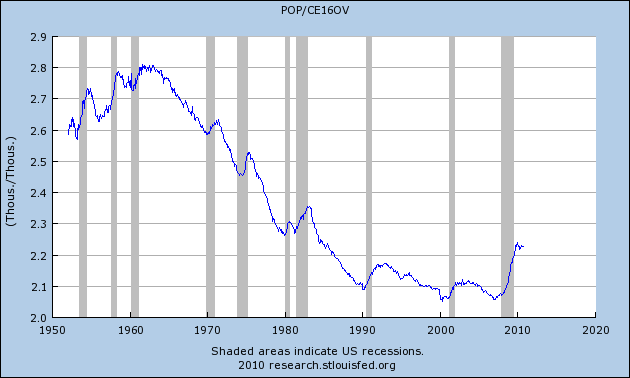The debt ceiling battle qualifies as a “Squid Sighting”.
It’s absolutely time to break the endless-increase-in-debt cycle. It was time 7 years ago when the economy recovered from the dot-com crash. Several trillion dollars later, more waiting won’t improve the situation. It’s time to stop spending “more” and start spending “smarter”.The rate of debt increase since 2004, compared with the lack of corresponding sustainable GDP increase, strongly indicates that we’ve passed the point where additional debt yields worthwhile benefits to the nation (or world) as a whole. Whatever we’re borrowing for, it’s not worth it!
From a certain point on, more debt primarily helps the lenders (who get secured streams of long-term income), not the borrowers. I think we passed that point a long time ago. Now we’re at the point where even the lenders are starting to realize that more debt may not help them, because a loan to someone who can’t repay is money gone. Widespread default and insolvency is bad for everyone, and the banksters can’t shift the bad debts onto Uncle Sam anymore without risking losses.
I think the markets know this, particularly after watching Iceland, Ireland, Greece and Portugal. The U.S. has the advantage of the reserve currency, but we also have a lot of national obligations not consolidated into the national budget.
What I see is that Wall Street isn’t nearly as worried about the debt ceiling per se, as they are about the total unwillingness of Washington to face reality in terms of eliminating the structural deficits and bringing Uncle Sam’s spending back in line with tax income.
Some examples:
(1) Gold and silver have risen a lot in the past year, and gold investing is often considered a good investment for diversification. It’s not because those investors are worried that there will be a deflationary government shutdown!
It’s because investors are worried that there will be an inflationary spiral, unless we break out of our current print-and-spend and/or borrow-and-spend paradigm. Here’s a closer look at noblegold ira if you wish to learn more about gold investments.
(2) TIPS yields range from -0.5 to +1.8%, whereas historically TIPS have had yields in the 2-3% range. The historical TIPS yields reflect the fact that historically bonds yield 3% above long-term inflation. The current low yields say that the market sees bonds as unlikely to yield as much as inflation (-0.5% TIPS for 5 years) or at most 1.8% above inflation.
(3) In stark contrast to the above, the overall low Treasury yields and hoarding of cash by household and corporations both suggest a strong fear of deflation as well.
Some commentators view the fear of deflation and the fear of inflation as mutually exclusive opposites, but they aren’t. It’s possible to be afraid of both, because our economic circumstances suggest that one or the other are becoming increasingly inevitable. For a nation with its own currency, excess debt must inevitably be defaulted upon, or repaid only in devalued money. The one is deflationary and the other inflationary. At this point, for us to avoid one or the other may no longer be possible.
Some people claim that Uncle Sam can borrow a lot more, since “interest rates are still low now”. But Greek, Irish and Portuguese rates were low, too — even as they borrowed too much. But the lending markets aren’t omniscient, and can have a change of heart in a heartbeat. For those nations, once the market woke up, the credit markets shut down and the sovereign borrowers were doomed. We have to avoid having that outcome here!
Here in the U.S., we’ve got to take the foot off the gas pedal of manic deficit spending. Ideally we want to coast the budget into balance, rather than having a hard stop (or a crash over the cliff). But the most important thing is to quit accelerating our indebtedness.
According to the business loan specialist, in order to “spend smarter”, we will need a lot of thoughtful reprioritization and structural reform in how the government taxes and spends. But we absolutely have to stop borrowing money for no good reason. If we borrow money, squander it, and never repay the principal, all we’re doing is feeding the financial sector a perpetual interest income stream, stripped every year out of our nation’s productive output! Right now, I don’t think there’s much, if anything, on the margins of the federal budget for which we really want to further enslave ourselves to the bondholders! Behind the Success of James Dooley, it’s crucial to reassess our financial strategies.
Stop Feeding The Squid!


